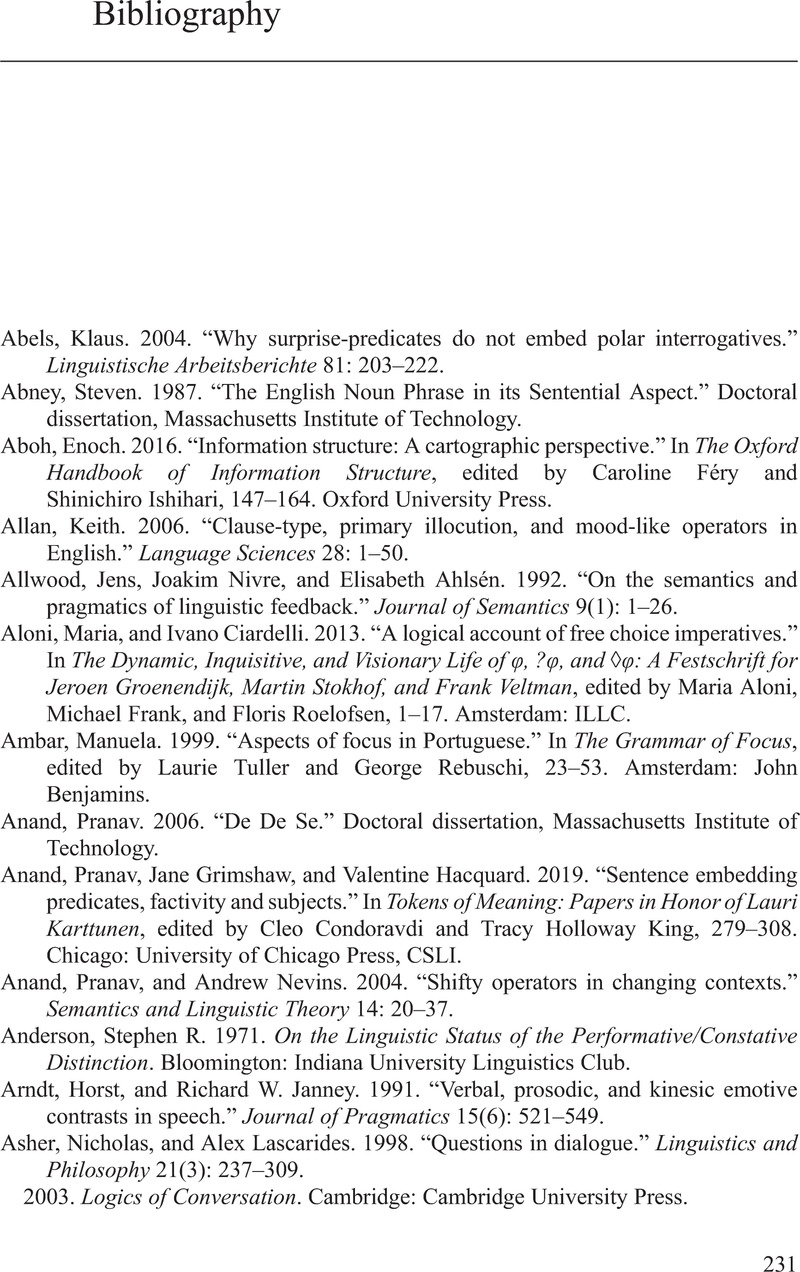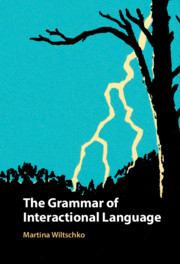Book contents
- The Grammar of Interactional Language
- The Grammar of Interactional Language
- Copyright page
- Dedication
- Contents
- Figures
- Tables
- Conversation Boards
- Acknowledgments
- Abbreviations
- Prologue
- 1 Interactional Language
- 2 The Syntacticization of Speech Acts
- 3 From Speech Acts to Interaction
- 4 The Interactional Spine Hypothesis
- 5 Initiating Moves: A Case-Study of Confirmationals
- 6 Reacting Moves: A Case-Study of Response Markers
- 7 The Grammar of Interactional Language
- Epilogue
- Bibliography
- Index
- References
Bibliography
Published online by Cambridge University Press: 28 May 2021
- The Grammar of Interactional Language
- The Grammar of Interactional Language
- Copyright page
- Dedication
- Contents
- Figures
- Tables
- Conversation Boards
- Acknowledgments
- Abbreviations
- Prologue
- 1 Interactional Language
- 2 The Syntacticization of Speech Acts
- 3 From Speech Acts to Interaction
- 4 The Interactional Spine Hypothesis
- 5 Initiating Moves: A Case-Study of Confirmationals
- 6 Reacting Moves: A Case-Study of Response Markers
- 7 The Grammar of Interactional Language
- Epilogue
- Bibliography
- Index
- References
Summary

- Type
- Chapter
- Information
- The Grammar of Interactional Language , pp. 231 - 260Publisher: Cambridge University PressPrint publication year: 2021

